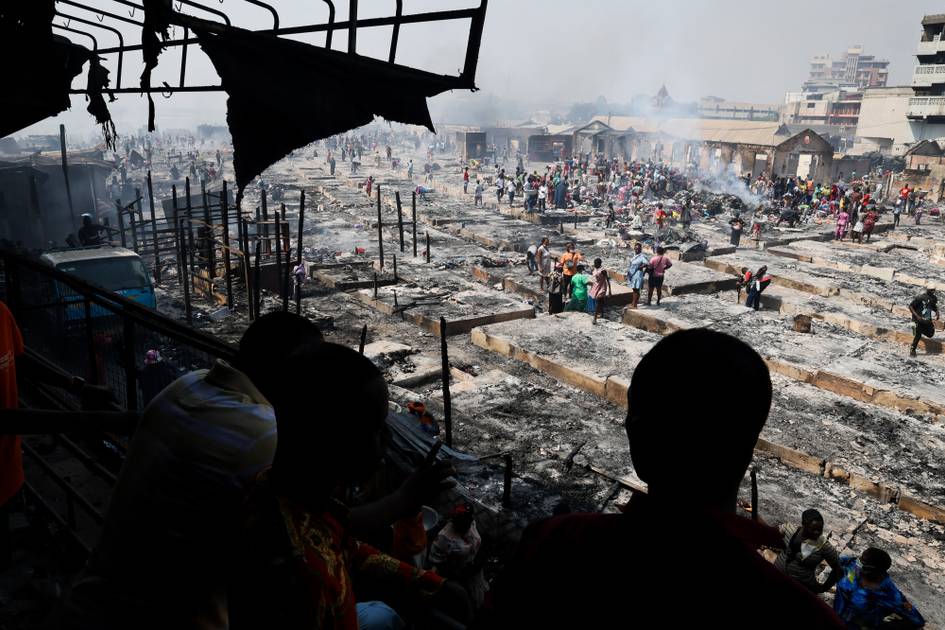“But why are you canceling? This should be easy for you.” That’s what a friend asked when I told her I was pulling out of a major speaking event in Barcelona. She was right to be surprised; after all, I had faced and overcome significant challenges in my life, including being a child refugee. I had always seen myself as the epitome of resilience, capable of facing any adversity.
But here I was, hesitating to take on an opportunity that many would dream of, and I couldn’t understand why. It wasn’t a matter of physical difficulty or lack of skill; it was something else, something more profound. This moment of uncertainty and self-doubt led me to reexamine what I thought I knew about resilience. It wasn’t just about enduring hardships; there was a deeper, more nuanced understanding that I had yet to grasp. This incident became a turning point, prompting me to go deeper into the true meaning of resilience, beyond the cliché and superficial interpretations.
To better understand resilience, I researched the life stories of resilient public figures like Yusra Mardini and Malala Yousafzai, and I conducted interviews with CEOs, business leaders, and entrepreneurs. What I learned is that much of our understanding of resilience, particularly in the workplace, is fundamentally flawed. Now I hope to unravel these misconceptions, shed light on what resilience truly entails, and explain how it manifests in the professional world. Here are the five biggest myths about professional resilience
Myth 1: Resilience is a solo journey
The common narrative surrounding resilience often paints a picture of a lone warrior triumphing against all odds. However, this portrayal is a myth. In reality, resilience is far from a solo endeavor; it’s deeply rooted in community and collaboration.
My father, Ismail Karra, is an entrepreneur who fled his native country and lived in refugee camps. He eventually founded a textile manufacturing business based in Istanbul. When I visited his factory, he told me how in the early days of starting his business, he relied on his community—fellow refugees and our own family—to develop the business. His first customers came from the networks with whom he had shared historical perspectives, which created a bond among his employees and throughout his customer base. This sense of community wasn’t just a by-product of their work; it was the foundation of their resilience. Research supports this as well. People are 55% more engaged when they feel a sense of community at work.
In the corporate world, this principle is validated further. Companies with community-focused cultures, like Lego and Ben & Jerry’s, enjoy heightened employee engagement and loyalty, and are therefore more resilient when faced with challenges. In fact, when aligned with strategy and leadership, a positive work culture leads to increased productivity and profit margins, and 88% of employees believe a strong company culture is vital for business success.
Statistics further dismantle the myth of solo resilience. When I interviewed Natalia Phillips, another CEO who today runs an investment firm based in Dubai, she recalled how early in her career she found herself in a toxic work environment. Eventually her mentor not only advised her to leave the company but also introduced her to her very first client. Such experiences are common among entrepreneurs; in fact, 93% of startup leaders acknowledge mentorship as instrumental to their success, highlighting the critical role of mentorship in entrepreneurial resilience.
Resilience in both life and work is fundamentally a communal endeavor, not an isolated pursuit. The experiences of leaders and entrepreneurs I’ve interviewed underscore that it’s the collective strength and shared efforts that forge true resilience. This understanding encourages us to foster supportive networks and embrace collaboration in our professional environments. By valuing each individual’s contribution within a community, we not only redefine resilience but also create workplaces that are more adaptable, supportive, and successful.
Myth 2: Once resilient, always resilient
One prevalent myth about resilience is that it is a fixed attribute—once resilient, always resilient. However, this notion is misleading. Resilience is, in reality, a dynamic and evolving quality. It requires constant adaptation to new challenges, much like businesses must evolve to remain relevant.
For example, consider the rapidly changing technology sector. Companies that were resilient during one phase of digital transformation may struggle in the next if they fail to adapt to new technologies or market demands. In the last four economic downturns since 1985, only about one in seven companies managed to increase both sales and profit margins, underscoring the challenge of maintaining resilience across different economic cycles. This is mirrored in personal resilience.
Having moved across countries and adapted to various cultures as a refugee, I’ve learned that past resilience doesn’t equate to a permanent ability to handle change. Resilience is a skill that needs continual nurturing and development.
This was the case for Yusra Mardini, who fled war-torn Syria and embarked on a harrowing, monthlong journey, narrowly dodging capture and death. When their crammed dinghy broke down between Turkey and Greece, she and her sister, also a swimmer, jumped into the water and helped guide the boat to safety. It was in Germany, however, during the arduous process of waiting for their asylum applications to be processed, that she faced a different kind of ordeal. Yusra and her sister spent most of the winter in a state of limbo, often waiting in long lines for over eight hours each day, stretching out for months.
It was during this period of prolonged uncertainty and inactivity, awaiting the decision that would determine their future, that Yusra recalls she “cried more than during the trip.” This experience in Germany revealed a nuanced aspect of resilience; it showed how the very nature of resilience can shift and evolve. While Yusra demonstrated physical and immediate resilience during her perilous journey, the prolonged waiting in Germany called for a different kind of resilience, one rooted in emotional endurance and mental fortitude. It highlights that resilience is not a static trait but a dynamic capacity that adapts and changes, requiring different skills and strengths in varying circumstances.
In essence, resilience is not a onetime achievement but a perpetual process of adapting and learning. Understanding this can significantly alter how we approach challenges, both in our personal lives and within our organizations.
Myth 3: Resilience is strength
The common interpretation of resilience as sheer strength and unwavering fortitude can lead to a dangerous misconception: overreliance on oneself without recognizing impending challenges.
This myth of resilience as unyielding strength can be seen in business strategies. Prior to Russia’s invasion of Ukraine in 2022, Anton Vasilev, a CEO I interviewed, was determined to maintain his company’s presence in these markets despite foreseeing potential challenges. His belief in his past resilience led him to overlook the need for diversification. When the war erupted, the company was unprepared for the drastic shift, resulting in significant staff reductions and cost-cutting measures. Though the business survived, it was fundamentally altered, demonstrating the pitfalls of an overreliance on past resilience.
Resilience, when misinterpreted as inflexibility, becomes a liability. It creates a blind spot, limiting the ability to foresee and adapt to changing circumstances. This was highlighted by business strategist Rita McGrath, who emphasizes the importance of “seeing around corners” in business strategy—a metaphor for anticipating and preparing for future challenges.
Moreover, treating resilience as a one-size-fits-all attribute can be particularly harmful to marginalized groups. It’s insensitive to assume that hardships automatically translate into resilience. Such assumptions overlook individual differences and experiences within these groups.
Another downside can also manifest itself as resilience fatigue, which could look like decreased motivation, a sense of disillusionment, or the feeling of being emotionally drained. It often arises in environments where the demands for resilience are constant and intense, such as in high-pressure jobs, in long-term caregiving roles, or in communities that face continuous socioeconomic challenges. Resilience fatigue highlights the need for supportive environments, regular opportunities for rest and recovery, and the importance of acknowledging that being resilient doesn’t mean being indefatigable.
In sum, true resilience should be coupled with awareness, adaptability, and a willingness to reassess one’s approach. It’s not about enduring without change, but about the capacity to pivot and evolve in the face of new challenges and information. By understanding and embracing this nuanced view of resilience, leaders and organizations can foster a more adaptable, sensitive, and ultimately successful environment.
Myth 4: You always bounce back
The conventional wisdom that resilience means simply “bouncing back” to a previous state after adversity is a significant oversimplification. A deeper, often overlooked aspect of resilience is its connection to what psychologists call “post-traumatic growth.” This concept extends beyond mere survival or endurance; it suggests that individuals can undergo profound positive transformations as a result of their challenges.
Post-traumatic growth involves not just a return to the status quo but also an enhancement of one’s life. It can lead to deeper relationships, a newfound appreciation for life, a reevaluation of personal strengths, and sometimes even a shift in spirituality or life goals. This transformative aspect of resilience illustrates that overcoming difficulties can catalyze significant personal development and emotional growth, which might not have been possible without facing such challenges.
However, the idea that we simply “bounce back” to who we were before we experienced trauma is a myth. As the renowned author Haruki Murakami eloquently puts it, “Once the storm is over, you won’t remember how you made it through, how you managed to survive. You won’t even be sure, whether the storm is really over. But one thing is certain. When you come out of the storm, you won’t be the same person who walked in.” This quote encapsulates the essence of post-traumatic growth.
In the context of the pandemic, many companies and individuals have experienced this phenomenon. The shift to remote work, the rise of quiet quitting, and the growing emphasis on sustainability and work-life balance are all indicative of a profound change. There is no simple return to pre-pandemic norms. Instead, there’s an evolution to something different, often something more aligned with evolved values and understanding. In essence, resilience is not about bouncing back; it’s about growing from what we go through, emerging not the same but stronger and more insightful.
Myth 5: Resilience is all about intellect
The common belief that resilience is solely a matter of intellect and rational thinking overlooks a crucial component: the role of mindfulness. This holistic view of resilience recognizes that enduring challenges often involve more than just mental strategies; it requires an acceptance of circumstances.
Research indicates that facing challenges head-on with acceptance can make them easier to endure. This acceptance is not about passive resignation but about acknowledging reality and finding strength within it.
Similarly, Malala Yousafzai’s remarkable recovery and activism were fueled not just by intellectual resilience but also by her deep-rooted faith and hope for a better future. Deepak Chopra also emphasizes the power of spiritual well-being as a cornerstone of resilience, blending vision and purpose with an inner strength that transcends intellectual reasoning.
In the business world, this broader perspective of resilience is evident in difficult times. During the pandemic, companies didn’t rely solely on strategic planning and analytics; many also embraced hope and a vision for better days, demonstrating faith in their ability to overcome unprecedented challenges.
In exploring and challenging these common myths about resilience, we gain a richer, more multifaceted understanding of this essential quality. Resilience, as we’ve seen, varies significantly across different contexts and individuals. What constitutes resilience in one scenario or for one person may not hold true in another. The factors that contributed to resilience at one point in time may not be effective in different circumstances. This dynamic nature of resilience underscores that there is no one-size-fits-all formula. Resilience is not a static trait but an evolving capacity.
By acknowledging that professional resilience encompasses community support, continuous adaptation, transformation through challenges, and the integration of mindfulness, we better equip ourselves, our teams, and our organizations for the complexities of the modern world. This comprehensive perspective allows us to not just endure but to thrive amid life’s uncertainties. Recognizing and valuing these diverse aspects of resilience opens up new ways to approach challenges, adapt, and grow, both personally and professionally. Resilience looks different to everyone, and understanding this is key to navigating and succeeding in an ever-changing landscape.







